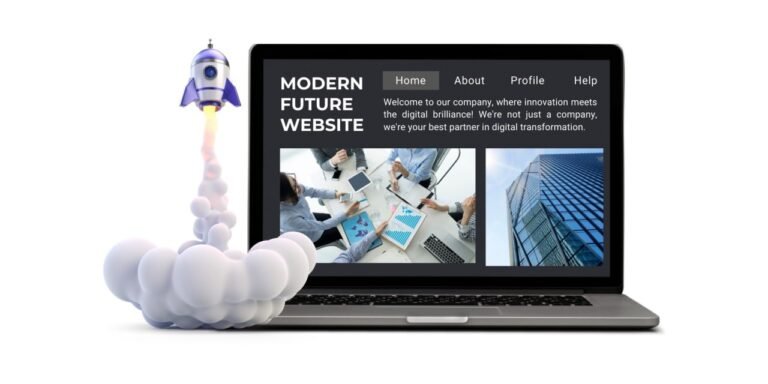Nos Services

Dans l'environnement professionnel actuel, qui évolue rapidement, la surcharge d'informations est un défi permanent. Construire un deuxième cerveau L'automatisation transforme la façon dont votre entreprise gère les connaissances, les décisions et les flux de travail. Cette extension numérique de l'intelligence collective de votre équipe garantit que les informations essentielles ne sont jamais perdues et que l'efficacité opérationnelle est maximisée.
Comprendre le concept de deuxième cerveau
Dans le paysage économique moderne, le concept d'une deuxième cerveau désigne un système externe centralisé conçu pour capturer, organiser et récupérer l'intelligence collective et les connaissances opérationnelles d'une entreprise. Contrairement à un système traditionnel de gestion des connaissances, qui fonctionne souvent comme un référentiel statique ou un classeur numérique, un deuxième cerveau est dynamique, interconnecté et personnalisé. Il est conçu non seulement pour stocker des informations, mais aussi pour relier activement les idées, automatiser les flux de travail et faciliter la résolution créative des problèmes et la prise de décisions stratégiques.
Outils et plates-formes d'automatisation essentiels
La distinction fondamentale réside dans leur philosophie de base et leur fonctionnalité. Les systèmes traditionnels de gestion des connaissances sont généralement.. :
- Passive et cloisonnée : Les informations sont stockées dans des structures hiérarchiques rigides (comme les dossiers et les bases de données) qui nécessitent une recherche et une navigation manuelles. Les connaissances sont souvent isolées au sein de départements ou de plates-formes spécifiques.
- Axé sur les intrants : L'objectif principal est le stockage de l'information. L'accent est moins mis sur la manière dont ces informations sont ensuite récupérées, connectées et appliquées à de nouveaux contextes.
- Taille unique : Ces systèmes offrent souvent une interface et une structure standardisées pour tous les utilisateurs, sans la personnalisation nécessaire pour s'adapter aux schémas de pensée des individus ou des équipes.
En revanche, le deuxième cerveau d'une entreprise se caractérise par sa présence :
- Actif et connecté : Il utilise des technologies telles que les liens associatifs (similaires à la façon dont le cerveau humain relie les idées) pour créer un réseau de connaissances. Les notes, les points de données et les projets sont reliés entre eux, ce qui permet de découvrir des relations et des idées inattendues.
- Orienté vers la production : Le système est conçu pour l'action. Son but ultime est de synthétiser l'information pour produire des rapports, des stratégies, des produits et des solutions de manière plus efficace.
- Personnalisé et adaptable : Il s'adapte à la façon dont les équipes et les individus travaillent, en tirant des enseignements des interactions pour faire apparaître les informations les plus pertinentes au bon moment.
L'automatisation est le moteur essentiel qui transforme une base de données statique en un second cerveau vivant. Sans elle, le système risque de devenir un simple outil numérique encombrant. L'automatisation est fondamentale pour l'efficacité dans plusieurs domaines clés :
- Capture et agrégation : L'extraction automatique de données à partir de diverses sources, telles que les courriels, les outils de gestion de projet, les entrées CRM et les flux d'informations sur les marchés, garantit qu'aucune information précieuse n'est perdue et élimine les frictions liées à la saisie manuelle.
- Organisation et connexion : Les algorithmes peuvent automatiquement étiqueter, classer et suggérer des liens entre les éléments d'information nouveaux et existants. Ils créent ainsi le "tissu conjonctif" qui rend la base de connaissances intelligente et navigable.
- Remise à niveau et rappel : Le système peut faire remonter de manière proactive des notes, des données ou des modèles antérieurs pertinents lorsque vous démarrez un nouveau projet connexe, agissant ainsi comme un assistant automatisé qui se souvient de tout ce que l'organisation a jamais appris.
- Intégration des flux de travail : L'automatisation fait le lien entre le deuxième cerveau et d'autres outils professionnels, en déclenchant des actions. Par exemple, une idée capturée pour une nouvelle campagne de marketing peut automatiquement créer une tâche dans une application de gestion de projet ou générer un projet de briefing.
En fin de compte, un deuxième cerveau alimenté par l'automatisation fait passer la relation d'une entreprise avec l'information d'un simple stockage à une synthèse active et à un effet de levier. Il garantit que la connaissance collective n'est pas simplement archivée, mais qu'elle fonctionne en permanence en arrière-plan, améliorant la créativité, accélérant l'exécution et fournissant un avantage concurrentiel décisif.
Concevoir votre flux de connaissances automatisé
La mise en place d'un deuxième cerveau professionnel nécessite une sélection stratégique de technologies d'automatisation et de plateformes logicielles conçues pour capturer, organiser et connecter les informations. Ces outils vont au-delà de la simple prise de notes pour créer un système de connaissances dynamique et interconnecté. Les catégories clés et leurs principales plates-formes sont les suivantes
- Plateformes de gestion des connaissances et de prise de notes : Ils forment le noyau central du deuxième cerveau.
- Notion : Un espace de travail tout-en-un combinant notes, bases de données, wikis et gestion de projets. Sa fonctionnalité principale réside dans la création de pages et de bases de données interconnectées avec de solides propriétés de filtrage, de tri et de relation. Il s'intègre à des milliers d'applications via des connexions natives et des outils comme Zapier, ce qui vous permet de créer automatiquement des pages à partir d'e-mails, de messages Slack ou de soumissions de formulaires.
- Obsidienne : Une base de connaissances puissante et locale qui fonctionne sur un réseau de fichiers de texte brut (Markdown). Sa caractéristique principale est la vue graphique, qui représente visuellement les relations entre vos notes. Ses fonctionnalités sont étendues grâce à un vaste écosystème de plugins communautaires, permettant une personnalisation approfondie et l'automatisation des flux de travail directement au sein de la base de connaissances.
- Evernote : Un vétéran de la prise de notes numérique, qui excelle dans le découpage de sites web, la numérisation de documents et la recherche puissante de texte dans les images et les documents. Il offre de solides capacités d'intégration avec les clients de messagerie, les applications de calendrier et les outils de productivité afin d'acheminer les informations vers un référentiel centralisé.
- Plateformes d'automatisation et de flux de travail : Il s'agit du tissu conjonctif qui automatise le flux d'informations entre vos autres outils.
- Zapier : Il s'agit d'un outil d'automatisation sans code qui relie plus de 5 000 applications web. Sa fonction principale consiste à créer des "Zaps", c'est-à-dire des flux de travail automatisés dans lesquels un déclencheur dans une application (par exemple, un nouvel e-mail dans Gmail) exécute une action dans une autre (par exemple, la création d'une nouvelle tâche dans Notion). C'est essentiel pour alimenter automatiquement votre deuxième cerveau sans saisie manuelle.
- Make (anciennement Integromat) : Une alternative puissante à Zapier qui offre des scénarios plus complexes, à plusieurs étapes, et de plus grandes capacités de transformation des données. Elle fournit un constructeur visuel pour concevoir des flux de travail complexes, ce qui la rend idéale pour gérer l'acheminement et le traitement de données complexes entre votre plateforme de gestion des connaissances et d'autres applications d'entreprise.
- Systèmes de gestion des documents et du contenu :
- Google Workspace / Microsoft 365 : Ces suites fournissent les documents de base, les feuilles de calcul et les présentations qui contiennent les connaissances de l'entreprise. Leur fonctionnalité de base pour un deuxième cerveau réside dans leurs puissantes fonctions de collaboration et leurs API étendues. Elles peuvent être profondément intégrées à des plateformes comme Notion ou à des outils d'automatisation comme Zapier pour synchroniser, archiver et lier les fichiers pertinents directement dans votre base de connaissances centrale.
- Centres de communication et de collaboration :
- Slack / Microsoft Teams : Bien qu'elles soient principalement destinées à la communication, ces plateformes sont de riches sources de connaissances institutionnelles. Leurs capacités d'intégration sont essentielles ; vous pouvez mettre en place des automatismes pour enregistrer les décisions importantes, archiver les conversations cruciales ou créer des tâches dans votre outil de gestion de projet directement à partir d'un canal ou d'un chat, ce qui garantit que des informations précieuses ne sont pas perdues dans des messages éphémères.
La véritable puissance d'un deuxième cerveau d'entreprise ne se réalise pas en utilisant ces outils de manière isolée, mais en tirant parti de leurs capacités d'intégration pour créer un écosystème homogène et auto-alimenté. En connectant un outil de communication comme Slack à une plateforme d'automatisation comme Zapier, qui alimente ensuite en informations structurées un hub central comme Notion ou Obsidian, les entreprises peuvent automatiser la capture des connaissances, en veillant à ce que le deuxième cerveau soit toujours à jour et exploitable.
Intégrer les systèmes pour un fonctionnement sans faille
La structuration des flux de travail automatisés pour la gestion de l'information d'entreprise nécessite une approche méthodique afin de garantir que les données sont capturées, classées et extraites efficacement. Le processus commence par une définition claire des objectifs et des types d'informations à traiter. Suivez les étapes suivantes pour mettre en place un système robuste :
- Capture : Identifiez toutes les sources de données, telles que les courriels, les formulaires, les bases de données et les appareils IoT. Utilisez des outils d'automatisation pour ingérer les données en temps réel ou dans le cadre de processus par lots, en veillant à ce qu'aucune information critique ne soit manquée.
- Catégoriser : Appliquer des règles cohérentes de marquage, de métadonnées et de classification. Utiliser l'IA ou des systèmes basés sur des règles pour trier les données dans des catégories prédéfinies, ce qui les rend consultables et exploitables.
- Récupérer : Mettre en place une interface de recherche conviviale avec des filtres, des mots-clés et des contrôles d'accès. Veiller à ce que le système permette une extraction rapide et précise afin de faciliter la prise de décision.
Les meilleures pratiques en matière d'organisation comprennent la normalisation des conventions de dénomination, le maintien d'un référentiel centralisé et l'audit régulier du flux de travail pour en vérifier la pertinence et l'efficacité. Des contrôles d'accès sécurisés et le cryptage des données sont essentiels pour protéger les informations sensibles. En suivant ces lignes directrices, les entreprises peuvent transformer des données brutes en un actif structuré et accessible.
Mesurer l'impact et l'amélioration continue
Pour créer un écosystème de connaissances automatisé et unifié qui favorise la collaboration interfonctionnelle, les entreprises doivent connecter stratégiquement leurs systèmes et applications disparates. Cette intégration permet un flux de données transparent, élimine les silos d'information et donne aux équipes une source unique de vérité. Plusieurs méthodes peuvent être employées pour y parvenir, chacune ayant ses propres atouts et ses cas d'utilisation idéaux.
- Interfaces de programmation d'applications (API) : Les API constituent la méthode la plus courante et la plus souple pour connecter les applications modernes. Elles permettent à différents systèmes logiciels de communiquer et de partager des données de manière normalisée et sécurisée. Les API RESTful, en particulier, sont largement utilisées en raison de leur simplicité et de leur nature web, permettant à tous les logiciels, de la gestion de la relation client (CRM) aux outils de gestion de projet, d'échanger automatiquement des informations.
- Plate-forme d'intégration en tant que service (iPaaS) : Pour les organisations qui gèrent de nombreuses connexions, un iPaaS offre une solution basée sur le cloud pour concevoir, déployer et gérer les intégrations. Ces plateformes proposent des connecteurs prédéfinis pour les applications professionnelles les plus courantes (par exemple Salesforce, SAP, Slack, Microsoft 365) et une interface visuelle permettant de créer des flux de travail sans avoir à coder de manière approfondie, ce qui accélère considérablement le processus d'intégration.
- Middleware personnalisé : Dans les scénarios impliquant des systèmes hérités ou des exigences très spécifiques que les connecteurs préconstruits ne peuvent pas satisfaire, le développement d'un intergiciel personnalisé est une option viable. Il s'agit de créer une couche logicielle dédiée qui joue le rôle d'interprète et de courtier en messages entre les systèmes, en traduisant les formats de données et les protocoles pour assurer la compatibilité.
- Bus de service d'entreprise (ESB) : Un ESB est une architecture plus traditionnelle et plus robuste pour l'intégration d'entreprises à grande échelle. Il agit comme un système nerveux central, utilisant un bus de communication standardisé pour acheminer les messages entre les applications connectées. Bien que puissants, les ESB peuvent être complexes et coûteux à mettre en œuvre et à maintenir par rapport aux solutions iPaaS modernes.
- Entrepôts et lacs de données : Pour créer une base de connaissances unifiée, les données des différents systèmes opérationnels peuvent être extraites, transformées et chargées (ETL) dans un référentiel central tel qu'un entrepôt de données ou un lac de données. Cette méthode est excellente pour l'analyse et le reporting, car elle permet d'obtenir une vue consolidée de l'entreprise pour la prise de décisions stratégiques.
Le choix de la méthode dépend de facteurs tels que les systèmes concernés, les capacités en temps réel requises, le budget et l'expertise technique interne. Une mise en œuvre réussie implique souvent une approche hybride. Par exemple, les données clients en temps réel peuvent passer d'une plateforme de commerce électronique à un système de gestion de la relation client via des API, tandis que les données par lots provenant des systèmes de fabrication sont consolidées chaque nuit dans un entrepôt de données à des fins d'analyse.
La mise en place d'un second cerveau automatisé n'est plus un luxe mais une nécessité pour les entreprises compétitives. Les principaux avantages sont les suivants
- Amélioration de la prise de décision grâce à des informations facilement accessibles
- Réduction des frictions opérationnelles et des erreurs humaines
- Une gestion des connaissances évolutive qui s'adapte à votre entreprise
Commencez dès aujourd'hui votre voyage d'automatisation pour protéger le capital intellectuel de votre organisation.



